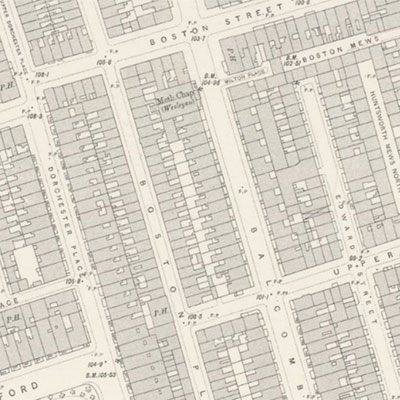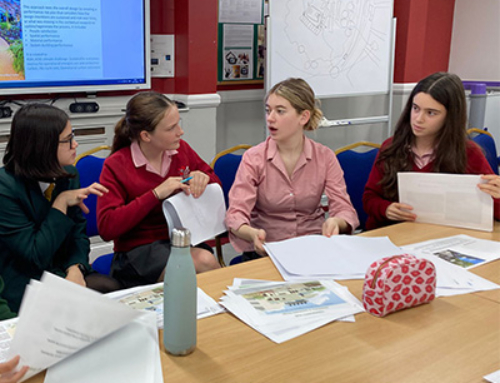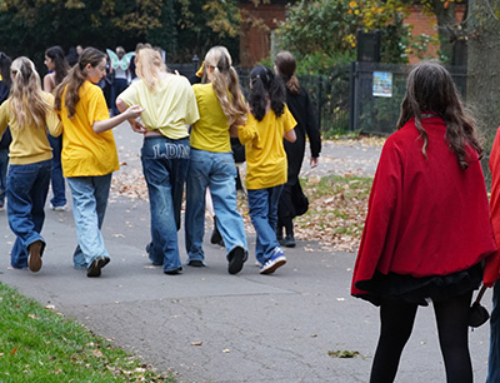Linhope Street began life under a different name. A street renaming scheme began in 1857, instigated by the Metropolitan Board of Works. There were an inordinately high number of Church, John, Edward and Charles streets, leading to confusion that encouraged the General Post Office to also advocate for these changes. Linhope Street therefore used to be ‘Edward Street’ on ‘Upper Park Place’ (now Ivor Place.) The address of Linhope Street is also recorded as being linked to ‘Dorset Square’ which is just south of the street, as the area around the School belonged to the ‘Dorset Square and Marylebone Ward.’ The name ‘Linhope House’ is therefore likely to derive from the street name, although there is a village called Linhope in Northumberland, it lends its name to a few large manors across the North East. The exact date at which Edward Street became Linhope Street is unclear, but it is pre-1912 and post 1895, as the map dating from this year shows below.
Our Linhope House was most likely built in the years following 1811, most likely mid 19th century. This is when Dorset Square was constructed, after the previous site of Lord’s Cricket Ground was moved.
The unusual shape of the building:
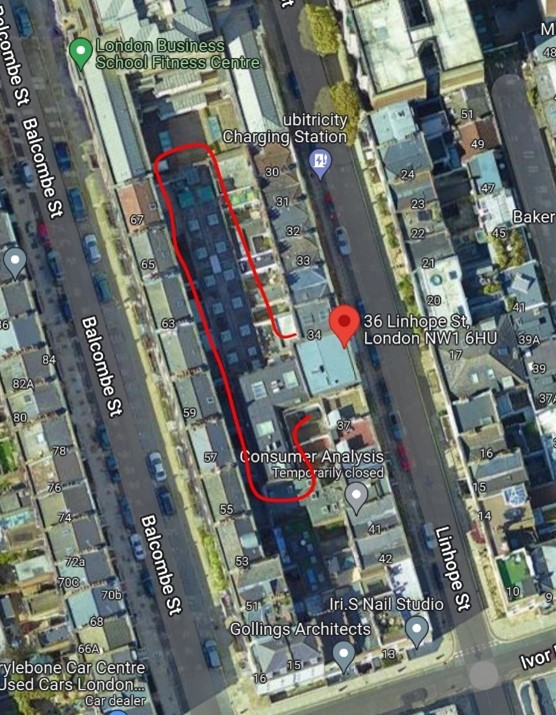
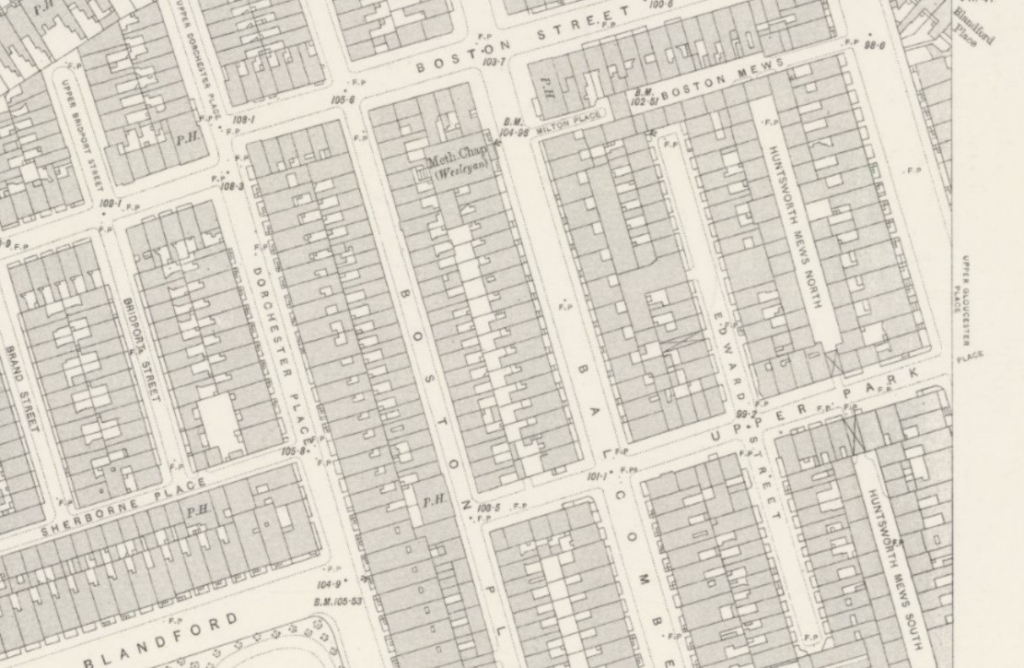
Although from the exterior of the building , Linhope House may seem like a traditional residential property, it in fact occupies the garden space of all house on Linhope Street, as well as some of those on the parallel street on Balcombe Street. As pointed out by previous owners, London Business School, this suggests the building, if not the entire street, had been purpose built or converted for commercial purposes. The map shows it has been this way since 1895, and certainly in the 1911 and 1901 census, no one is recorded to be living at number 36 or 40 (the two entrances to the large property) despite there being many neighbours recorded either side.
Who previously worked at Linhope House?
FHS bought the property from London Business School, who bought it from a single owner who used the property as offices (and had also created an illegal living space on the top floor which had to be abolished by the business school!)
In the mid 19th century, Linhope house belonged to marble works Bellman, Ivey and Carter. They are a registered business in 1936, although the exact date they moved into Linhope house is unclear as they had multiple properties around London. Did they convert a residential house into a workshop? That remains a mystery for now.
Bellman, Ivey and Carter
Bellman, Ivey and Carter were Plaster-of-Paris manufacturers, cleaners and sculptors with a sculpture gallery. After 1890 they are recorded as being dealers and importers of sculpture in marbles, bronze and terracotta by appointment to the Queen. In 1900 their business is recorded as ‘Sculptors, Dealers in and importers of sculpture in marble and bronze’
Source: The National Portrait Gallery:
Vincent Bellman (c.1796-1860) was in business as a plasterer by 1832, additionally as a scagliola manufacturer by 1835. The nature of his business is apparent from an advertisement in 1838 featuring his scagliola works and offering columns and pilasters with capitals and bases, pedestals, candelabra and slabs for table tops (Robson’s London directory 1838).
The business worked for Queen Victoria, Edward VII and George V. It held a warrant by appointment to Queen Victoria from at least 1885 as marble manufacturers, and to Edward VII from 1901, and subsequently to George V, as manufacturers of pedestals for statuary and restorers of sculpture (London Gazette 27 January 1885, 1 November 1901, etc). From press reports in the early 1890s, it is apparent that Carter, as the partner in the business, took collections of bronzes to Windsor Castle for Queen Victoria to choose from (e.g., The Times 13 December 1892).
The business repaired sculpture. It worked for the National Portrait Gallery between 1902 and 1919, including ‘cleaning & stopping statuary’, among which were 44 marble busts, ‘reflatting’ 12 plaster casts and other work for £34.14s in 1906, restoring a smashed plaster bust of Edward Bird by Chantrey for £3 in 1908, and supplying 13 green marble pedestals for £112 in 1911, the first of several such orders (National Portrait Gallery records, Duplicates of Accounts, vol.5, pp.34, 122, vol.6, pp.17, 20, 37, 72, 78, vol.7, p.34, etc). It also cleaned and repaired some of the plaster casts by Flaxman in University College London in 1922 at the considerable cost of £333 (UCL Art Museum, Strang Print Room, Flaxman Gallery dossier, pp.110, 307).
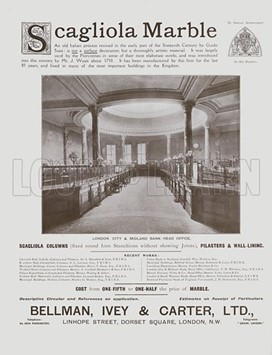
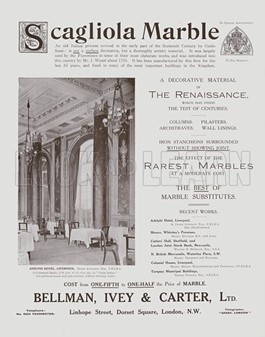
Who previously lived at Linhope House?
In 1881, if door numbers are accurate, there were residents at 36 Edward street in the 19th century. The Hinson family, where Thomas Hinson lived with his wife Mary Ann and son Waltera Hinson as well as their lodger Sampson Payne, a coachman. Interestingly their son was born in Brooklyn, although it seems his parents were local to Marylebone. Thomas’s occupation is listed as ‘Painter;’ looking at his neighbours’ occupations which include dressmakers, bricklayers and carpenters, it is likely Thomas painted in industry rather than the world of art.
1881 census records:

In 1871, the house was occupied by the Howland family. ‘Head’ of the family was William Howland, a police inspector, and his wife Anna. Their 14-year-old son William is cited as being a news agent assistant, and they had three other children; a daughter Rosem and sons Gorge and Robert.
1871 census records:

Miss Cooper, History Teacher


